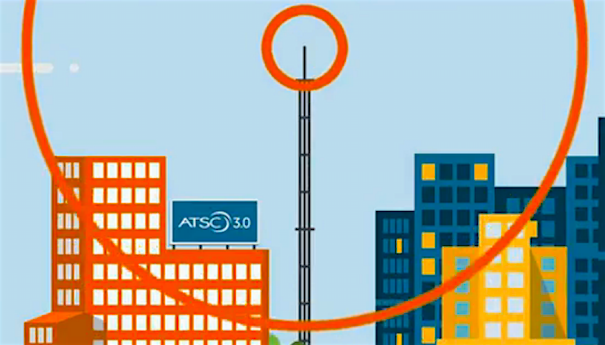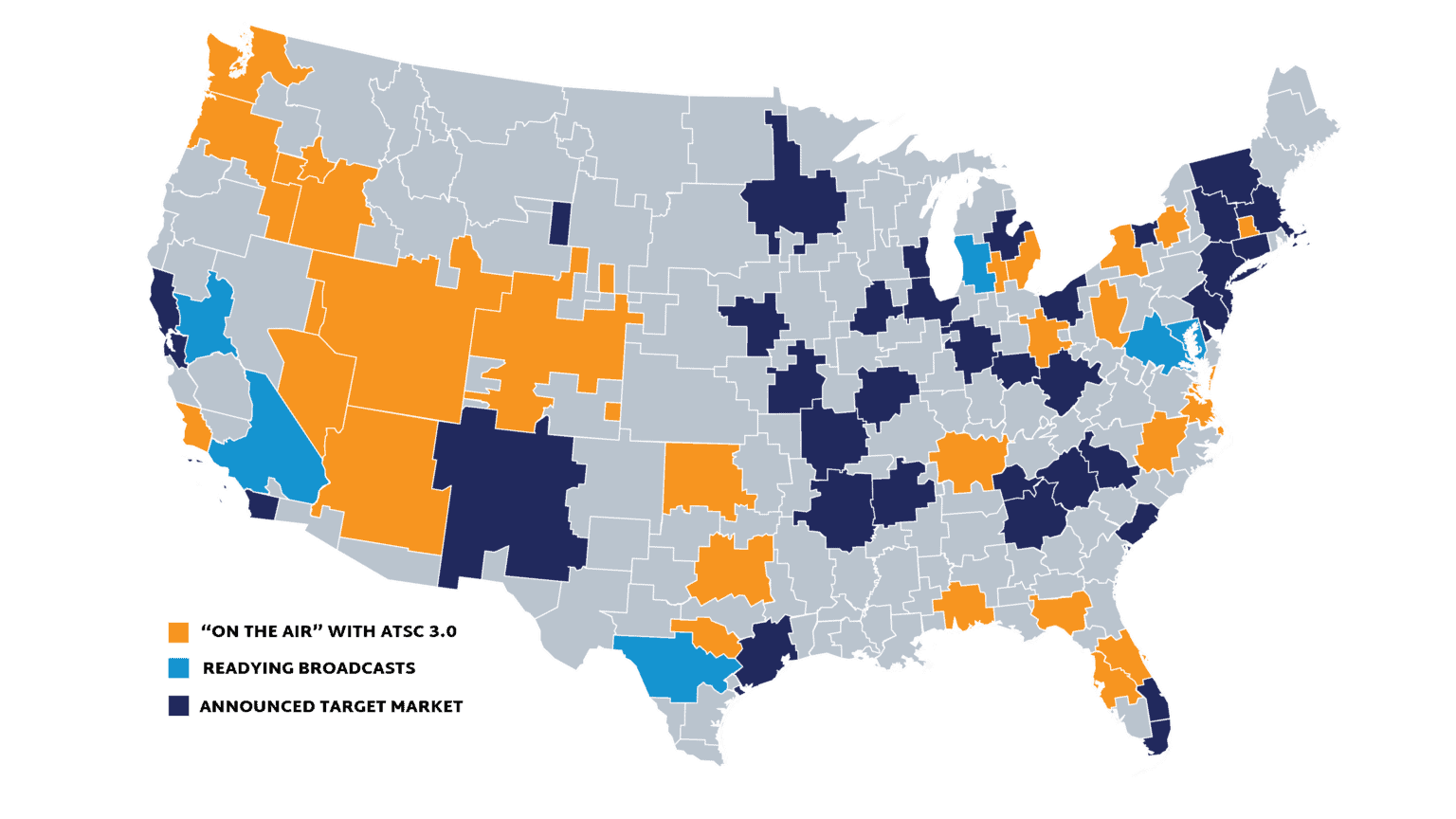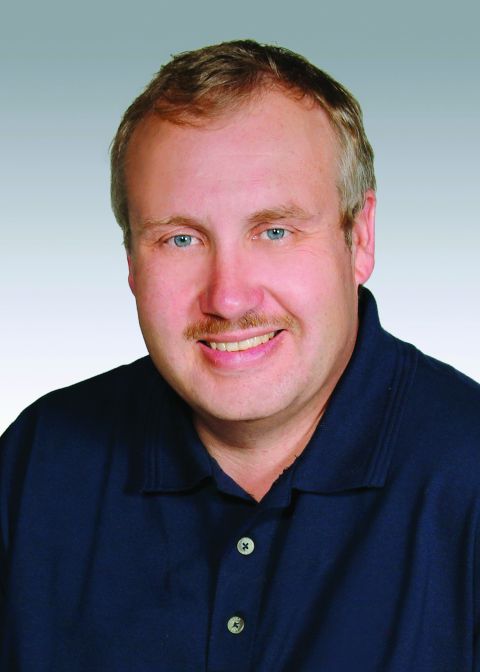NextGen TV Offers New Opportunities for Radio Too
Moving radio to NextGen Broadcast changes the ground rules

"I would like to see AM radio begin simulcasting on ATSC 3.0 signals. A single ATSC 3.0 transmitter could carry all of the AM signals in a market, in addition to TV programs.”
That was Dave Hershberger, quoted in a Radio World profile after his much-deserved receipt of the NAB Radio Engineering Achievement Award.
I think his proposition is worth considering.
In my opinion, the ultimate broadcast engineering experience is still an AM directional antenna array. That said, I smile politely when I hear talk of “AM revitalization.” At this point I think a deliberate, clear-eyed look at our much-loved industry leads us to reinvention over repair.
Medium-wave spectrum is far from “beachfront property.” For reasons that have been well documented — poor building penetration, increasing noise, dwindling receivers, aging demographics — the most likely future for AM spectrum is that it will continue to lose value to the point where launching something completely new, like high-power all-digital, makes sense.
FM’s low-VHF spectrum is closer to “beachfront property,” but even high-VHF is considerably better. Note that originally, FM was promoted as a replacement for AM, it was not promoted as an additional service.
Broadcasters also distribute their linear content via unlicensed and unlimited internet. This is all IP, so there’s no limitation on what can be broadcast, how it is packaged or how much bandwidth it takes.
While OTA broadcast covers unpopulated areas well, streaming is now available in virtually every populated area, building, tunnel, venue, etc., and there are few limits to how big the “coverage area,” can be, up to and including the entire planet.
Besides 5G, tiny IP satellites are coming fast, covering the earth’s surface.
The single most important data point for broadcasters is ascertaining the audience. Our product is “eyes and ears,” a.k.a. “attention,” and we are not alone seeking and selling it.
[See also: Next-Generation ‘Franken FMs’ on the Rise]
When it comes to quantifying and qualifying the audience, OTA falls short of the internet. Interactivity, targeted advertising, non-linear and rich media are all impracticable within the current ecosystem.
That’s not trivial. Radio really can’t compete well with delivery that tells our customers exactly who is listening and can target advertising, alerts and other content.
Radio’s traditional exclusive sweet spot had been mobile. But streaming to smartphones, cars and portable “radios” with the present-day “carrier” access networks, even without 5G, is better in most ways than OTA.
FM chips in phones were never a viable option. But patrons expect that smartphone FM radio will work in any location — basement, elevator, office — where cell phones do but OTA FM cannot reach.
Selling points
So why should radio broadcasters be interested in ATSC 3.0?
First, NextGen Broadcast — and that’s what it is — is not just TV. Because it is IP-based, it can carry anything: linear radio and any data service, album art, or whatever … along with TV.
Second, OFDM on UHF runs circles around AM or FM in terms of coverage and penetration. Critical to this, is that like the HD/OFDM part of HD FM, single-frequency networks composed of multiple transmitters can push coverage into places otherwise unreachable by any other means other than the cellular carriers.
NextGen Broadcast on UHF is beachfront spectrum. No one is lining up to re-farm MW and VHF spectrum. There will be no auctions of radio spectrum.
Moving radio to NextGen Broadcast changes the ground rules.
For my entire career, it has been clear that the Venn diagram of radio and TV has two spheres that are destined to converge. The move to IP does exactly that.
In American radio, broadcasters ordinarily own and operate their own single-service transmitter (HD2, HD3 aside) and maybe some translators and streaming servers. NextGen Broadcast is a multiplex of services, radio, TV and data.
Some NextGen pioneers plan to aggregate their spectrum to move content between transmission systems; adjusting modulation/coding to maximize coverage, reach and capacity as appropriate for the individual services.
ATSC 3.0 can do that. Radio services could have a lease or other arrangement for access to a slice of NextGen multiplexes.
Currently, an FCC license is for 6 MHz of spectrum traditionally held by one entity. In NextGen broadcast, that license typically houses multiple “broadcasters.”
While one might not have to worry about tower lights or transmitter maintenance, “radio stations” likely would not be limited to those with a license and call letters. Regulations probably need to be updated, if for no other reason than rules enforcement reaches the spectrum holder and not the occupants.
There are other regulatory opportunities. For example, being IP, emergency alerting can be done once, collectively, for the whole multiplex.
NextGen has momentum
The current DTV transmission ecosystem is shifting to ATSC 3.0, with the first wave approaching completion with about 75% of the population covered by at least one NextGen Broadcast signal. According to some estimates, 2 million 3.0-capable TV sets will be in homes by Christmas of 2022.

If you think radio has challenges, look at TV. Current DTV is stuck with an ancient inefficient codec that can’t handle what today’s TVs can display and a modulation scheme (8-VSB) that can’t handle motion or support single-frequency network boosters.
It’s hard to imagine that in a decade, OTA TV will still be ATSC 1.0 in any sustainable way. Manufacturers are heavily invested in selling NextGen Broadcast throughout the world because that sells bigger, better TVs. They just have to be contemplating better “radios” too.
So how does that get NextGen Broadcast receiver chips into cars and smartphones?
For that, we have to look at the symbiotic relationship between ATSC 3.0 and 5G.
While most of the world’s connectivity traffic is unicast, the bulky part is broadcast. While the obvious 3.0 use case is the 700-pound gorilla of live linear radio and TV, there is also the anticipated distribution of data for self-driving cars and certainly things yet undreamed.
One can speculate that as the NextGen Broadcast infrastructure expands, discounted distribution and low-cost storage will be attractive for delivering more than the obvious popular movies and podcasts.
When it comes to the intersection of technology, regulation and business, anything can happen anywhere. However, NextGen Broadcast is designed to replace the world’s aging and imperfect OTA distribution. All of it.
This isn’t an incremental improvement.
As NextGen Broadcast transmission is lighting up, what is being distributed is, with few notable early exceptions, simulcasts of existing TV and radio content. That is not a typo. Audio services, including simulcasts of legacy radio stations, are being conveyed by NextGen Broadcast on the air now.
What’s next is the consumer side of the ecosystem. Clearly the first multi-millions of NextGen reception devices will be about simply making pictures and sound.
We radio broadcasters have “asks” that we might not have thought we could dream of. Dynamic (targeted) advertising and listener intelligence will need the devices to run apps that are built in or placed on the device by broadcasters. First-run NextGen TVs do some of that. Radio should be next.
Real opportunity
In a nutshell: After 20-plus years, and millions if not billions of dollars of development by hundreds of entities, NextGen Broadcast is authorized and on the air. Whether incumbent “radio” broadcasters take advantage of its capabilities and opportunities is an individual choice.
Some will stay the course, but others will enter a converged media world that is free of the major impairments and limitations we’ve been “improving” and “revitalizing” our way out of with limited success.
The combination of near-perfect distribution and the unlimited capabilities of OTA IP is a radio content provider’s Holy Grail. It might start with NextGen Broadcast simulcasts, but as a believer in radio, I think it goes much further. While we’ve been running toward revitalization, NextGen Broadcast has just tapped us on the shoulder. This is a tipping point that might take some of us by surprise.
Someday, I’d like to listen to radio in a hotel room again.
This article originally appeared in TV Tech sister publication, Radio World.
Get the TV Tech Newsletter
The professional video industry's #1 source for news, trends and product and tech information. Sign up below.
Fred Baumgartner, K0FMB earned his first-class FCC license and got his first broadcast jobs before a driver’s license. He recently retired from Sinclair Broadcasting where he was Director of NextGen Broadcast Implementation. He had also been a Director of Engineering with Qualcomm’s MediaFLO project, enabling TV on cell phones. His long career included Comcast, AT&T, Harris Broadcast, and several Chief Engineer roles at TV and Radio Stations. He was also a key developer of EAS and was TFT’s product manager for the first generation of EAS equipment. Fred is well known in Society of Broadcast Engineering circles for his involvement in education.

